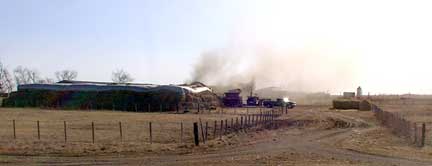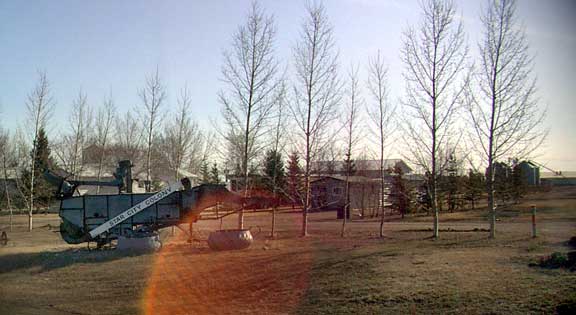|
The Collective Farm |
 |
| FTLComm - Star City - April 27, 2001 |
| There is so much concern about the survival of the "family farm,"
there is fear and concern about the development of "corporate farms"
but this is a distinctly different kind of farm, "The Collective."
Collective farms were found in the Ukraine, China, Cuba and of course Israel where
we know of them as Kibbutz Though some how associated with socialist
or communist government, the collective is really a compromise. People without land
and only their skills and labour to contribute, who share a common cultural, political
or spiritual identity, have discovered this form of agriculture and the form has
evolved. After the revolution in Russia the the need for agricultural productivity forced the formation of efficient agricultural units and they took two formats, the state run, government farms and self operating collective farms often formed around the local "commune" association. It is generally agreed that Russian and Ukrainian experience with collective farms was less than successful. In order for any farm, no matter what its economic base, to succeed, there is the requirement that those involved must be totally dedicated to the project. It seemed that the Russian and Ukrainian examples never really had the level of commitment that was required and as a result, throughout the history of the Soviet Union, there grew a dependence upon imported food from North America. The real success in collective farms were the Israel Kibbutz With the constant threat from Palestinian terrorists and the lingering gloom of the holocaust, the Israeli collective farm had the dedication and needed desire to work effectively together, to product efficient and highly successful farming operations. With the Great Schism that tore through the Catholic church and has been identified as the Protestant Reformation there were a number of "Anti baptism" religious movements that grew up being neither Roman Catholic or Protestant among these were the Mennonites and the Dukabors. The Mennonites coming out of Northern Germany and the Dukabors from Russia. The Hutterites, though German speaking may actually have come from Holland. Like the Mennonites the Hutterites had suffered considerable religious persecution and like the Dukabors developed a means of insulating themselves from government. Like the Mennonites they had moved to Southern Russia then in time come to North America but their tradition of collective farms was already well established and with their customs, language and religion they had all the elements to make a successful collective farming venture. |
 The development of the prairie Hutterite collective farms is a relatively modern development as they began assembling land for colonies in the early sixties. Each colony evolved in a natural manner from a group of successful colonies developing the new ones with excess population. Through their history they have developed the social awareness to know the best and most efficient size for a colony and have used this knowledge to create highly successful farm communities that will be able to utilise the labour and skill on a colony then cloning off to form new colonies when numbers warranted the development. All of this is quite remarkable when you realise that the communities are very strict in their practice of social and religious customs which have seen the preservation of their language and the fundaments of their religious experience moving through time staying intact and bolstering their culture and economic prosperity. |
 The Hutterite operations have learned to adapt to Canadian law and their children attend local colony, but provincially run schools, until each child has reached the legal age of quitting. Parallel to the conventional curriculum they have a German teacher who sees to the religious and language needs of the students. This means that all Hutterites have a basic grade eight education and because of the rigours of modern agricultural finance they provide their leadership with addition education so that they can administer their farms efficiently and with the same kind of tools as would be found in any business. |
 The main components of the "collective farm" are the social, cultural and spiritual parts of life that bring people to an acceptance and willingness to work and prosper together. Without these strong ties no collective can effectively function. But the functionality of a Hutterite Collective farm is remarkable. With the weight and support of the founding colonies a Hutterite farm has enormous capital capabilities which allow them to assemble land and equipment on a scale well beyond any other, including corporations. The discipline and responsible work ethic of colony members provides the farm with almost a limitless supply of skilled workers. |
 The Star City colony is only one of many in this and other parts of Saskatchewan, Manitoba and Alberta. Each colony develops its own cultural uniqueness and each have varying levels of interaction with the community in which they share the countryside. This colony is particularly well liked and respected by its neighbours and because of their excellent support of community business they are popular customers and considered a part of the community as a whole. This is not the case with all colonies as some produced initial resentment when they moved into closely knit rural communities and absorbed so much land while being separate from the general society. One of the most notable contributions to Melfort, Tisdale and Nipawin is the participation by the Hutterite communities in the farmers markets where their produce is highly valued and a matter of local pride for everyone. |
 |